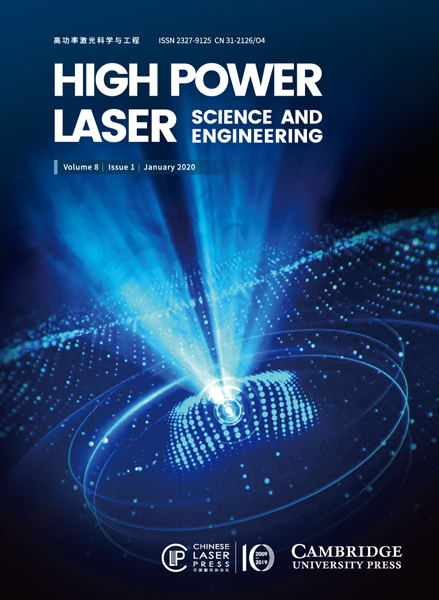2020, 8(3) Column
High Power Laser Science and Engineering 第8卷 第3期
Decoupling of the position and angular errors in laser pointing with a neural network method Download:675次
Download:675次
 Download:675次
Download:675次In laser-pointing-related applications, when only the centroid of a laser spot is considered, then the position and angular errors of the laser beam are often coupled together. In this study, the decoupling of the position and angular errors is achieved from one single spot image by utilizing a neural network technique. In particular, the successful application of the neural network technique relies on novel experimental procedures, including using an appropriate small-focal-length lens and tilting the detector, to physically enlarge the contrast of different spots. This technique, with the corresponding new system design, may prove to be instructive in the future design of laser-pointing-related systems.
artificial neural networks laser pointing pointing errors We evaluate and demonstrate ultra-broadband near-infrared noncollinear optical parametric amplification in two nonlinear crystals, bismuth borate (BiBO) and yttrium calcium oxyborate (YCOB), which are not commonly used for this application. The spectral bandwidth is of the microjoule level; the amplified signal is ≥ 200 nm, capable of supporting sub-10 fs pulses. These results, supported by numerical simulations, show that these crystals have a great potential as nonlinear media in both low-energy, few-cycle systems and high peak power amplifiers for terawatt to petawatt systems based on noncollinear optical parametric chirped pulse amplification (NOPCPA) or a hybrid.
ultrafast laser high power laser nonlinear optics ultra-broadband noncollinear OPA YCOB and BiBO nonlinear crystal Spatiotemporal characterization of laser pulse amplification in double-pass active mirror geometry Download:667次
Download:667次
 Download:667次
Download:667次We present a spatiotemporal model of pulse amplification in the double-pass active mirror (AM) geometry. Three types of overlap condition are studied, and the spatiotemporal scaling under the four-pulse overlapping (4PO) condition is fully characterized for the first time, by mapping the temporal and spatial segments of beam to the instantaneous gain windows. Furthermore, the influence of spatiotemporal overlaps on the amplified energy, pulse distortion and intensity profile is unraveled for both AM and zigzag configurations. The model, verified by excellent agreement between the predicted and measured results, can be a powerful tool for designing and optimizing high energy multi-pass solid-state laser amplifiers with AM, zigzag and other geometries.
active mirror amplifier pulse overlap spatiotemporal characterization double-pass 动态信息
动态信息 丨 2023-06-21
HPL Highlight (Vol. 11, e40): NIF仍然是全球唯一一个能够进行ICF点火实验的装置动态信息 丨 2023-06-21
HPL Highlight (Vol. 11, e9): 变分神经网络预测激光尾波场加速电子能谱动态信息 丨 2023-06-21
HPL Highlight (Vol. 11, e7): 目标探测网络加入,激光等离子体加速器实现实时诊断动态信息 丨 2023-06-21
HPL Highlight (Vol. 11, e5): 910 nm波段超宽带种子源,向100 PW超强超短激光进发动态信息 丨 2023-06-21
HPL Highlight (Vol. 11, e4): 100 PW单束压缩!多步压缩器进阶双光栅激光评论微信公众号

点击菜单“联系编辑”即可添加期刊编辑为好友啦







